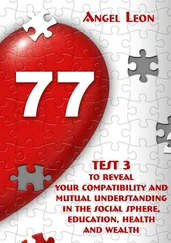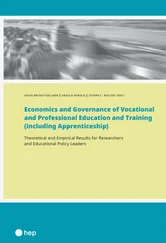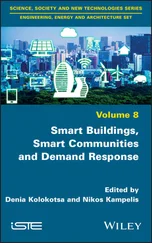In that sense, community is not clearly defined and cannot be easily measured. Titz et al. (2018) argue that ‘community’ is elusive because ‘it either escapes clear definitions or is described by too many, and it is deceiving because it has become so popular in (disaster) research and action that barely anyone bothers to question its legitimacy and usefulness’. These authors contend that ‘community’ should be replaced by more precise concepts such as neighbourhoods or social networks, e.g. a religious or ethnic group. To support this argument, in this book general reference is made to ‘community education’ with ‘community’ used as a synonym with ‘social’, ‘civic’, or ‘public’ (each of which are used across the world in this sense). In Chapter 11 , the community is broken down into community sectors for the purpose of targeting disaster learning. Elsewhere, the community discussed is clearly defined, e.g. a population at risk to a certain probability of flooding.
1.5 Learning 1.5 Learning Given that disasters are socially constructed and the role of at-risk people and their communities in disasters is critical, then learning by these people and their communities before, during, and after a disaster is paramount. This contention is supported by the Sendai Framework for Disaster Risk Reduction 2015–2030 (United Nations 2015), endorsed by countries across the world, which in several instances promotes the need for disaster-related learning in its actions, including ‘to promote national strategies to strengthen public education and awareness in disaster risk reduction, including disaster risk information and knowledge, through campaigns, social media and community mobilization, taking into account specific audiences and their needs’. This book examines the nature of disaster learning and how it can be made most effective. A major challenge in disaster-related learning is that in comparison to other forms of personal civic learning (e.g. road safety, health, waste management, financial management), a disaster (or even an emergency) may never occur in one's lifetime. On the other hand, people learn to manage money on a regular basis, to be constantly wary of road and other transport hazards, and to be aware of lifelong risks to their health.
References References 1 Alexandra, T., Cannon, T., and Krüger, F. (2018). Uncovering ‘community’: challenging an elusive concept. Development and Disaster Related Work Societies 8: 71. 2 Bankoff, G., Frerks, G., and Hilhorst, D. (2007). Mapping Vulnerability: Disasters, Development and People. London: Earthscan. 3 Burton, I., Kates, R., and White, G. (1993). Environment as Hazard, 2e. New York: Guilford Press. 4 Centre for Research on the Epidemiology of Disasters (2018). Economic Losses, Poverty & Disasters 1998–2017. Report produced in conjunction with the United Nations Office for Disaster Risk Reduction. 5 Haque, C.E. & Etkin, D. (2012). Dealing with disaster risk and vulnerability: people, community and resilience perspectives. In: Disaster Risk and Vulnerability: Mitigation Through Mobilizing Communities and Partnerships, (eds C.E. Haque & D. Etkin), McGill-Queen's University Press. Montreal, Canada, 3–27. 6 Kelman, I. (2018). Lost for words amongst disaster risk science vocabulary? International Journal of Disaster Risk Science 9 (2): 281–291. 7 O'Keefe, P., Westgate, K., and Wisner, B. (1976). Taking the naturalness out of natural disasters. Nature 260: 566–567. 8 Oliver-Smith, A. (2005). Communities after catastrophe. In: Community Building in the Twenty-First Century (ed. S.E. Hyland), 25–44. Santa Fe, USA: School of American Research Press. 9 Tierney, K. (2014). The Social Roots of Risk: Producing Disasters, Promoting Resilience. Stanford, USA: Stanford University Press. 10 United Nations (2015). Sendai Framework for Disaster Risk Reduction 2015–2030. Available: https://www.unisdr.org/we/inform/publications/43291 . 11 United Nations International Strategy for Disaster Reduction (2018). What is disaster risk reduction? [Online]. Available: https://www.unisdr.org/who-we-are/what-is-drr (accessed 11 June 2019). 12 United Nations Office for Disaster Risk Reduction (2017). Terminology on disaster risk reduction. [Online]. Available: https://www.unisdr.org/we/inform/terminology (accessed 11 June 2019). 13 Wisner, B., Blaikie, P., Cannon, T., and Davis, I. (2004). At Risk: Natural Hazards, People's Vulnerability and Disasters, 2e. New York: Routledge.
2 Disaster ECE2.1 Disaster Education 2.2 Disaster Communication 2.3 Engagement 2.4 Disaster ECE References 3 ECE Across the Disaster Management Cycle3.1 ‘The Disaster Management Cycle’ 3.2 Mitigation 3.3 Preparedness 3.4 Early Warning 3.5 Response 3.6 Recovery 3.7 Lessons Learned 3.8 Reconstruction References 4 The Importance and Usefulness of Disaster ECE 4.1 Inputs 4.2 Activities 4.3 Outputs 4.4 Short-Term Impacts 4.5 Intermediate Impacts 4.6 Outcomes References 5 Exploring Relevant Research Fields 5.1 Disaster Resilience 5.2 Disaster Psychology 5.3 Disaster Sociology 5.4 Learning Theory References
4 Part II: Local Disaster ECE 6 Designing Effective Disaster ECE Plans and Programmes 6.1 Lifelong Learning 6.2 Localisation and Learner Needs 6.3 A Framework for Tailoring Disaster ECE References 7 Disaster ECE Principles References 8 Disaster ECE Content 8.1 Across the Disaster Management Cycle 8.2 Disaster Resilience 8.3 Climate Change 8.4 Sustainability References 9 Disaster ECE Methods 9.1 A Typology of Disaster ECE Methods 9.2 Information 9.3 Interactions 9.4 Skills and Capabilities 9.5 Creative Expression 9.6 Integrating Methods References 10 Understanding Communities and Their Risks 10.1 Understanding the Local Community 10.2 Local Disaster Risks 10.3 Risk Reduction Measures 10.4 Emergency Management 10.5 Building Resilience References 11 Learners 11.1 Youth 11.2 Other Vulnerable People 11.3 Businesses 11.4 Animal Guardians 11.5 Tourists 11.6 Archetypes References 12 Disaster ECE Programmes and Plans12.1 Tailoring Disaster ECE 12.2 Disaster ECE Plans 12.3 Disaster ECE Programmes 12.4 Evaluation 12.5 Participation References
5 Index
6 End User License Agreement
1 Chapter 2 Table 2.1 Harmonisation of disaster education, communication, and engagement.
2 Chapter 5Table 5.1 Summary of relevant learning theories and activities for Disaster E...
3 Chapter 9Table 9.1 A typology of disaster ECE methods.Table 9.2 The main uses of Twitter in disaster management.
4 Chapter 11Table 11.1 Curriculum map showing the main opportunities for disaster resilie...
5 Chapter 12Table 12.1 An extract from a Disaster ECE plan for Fairfield City, Sydney, Au...
1 Chapter 2 Figure 2.1 Disaster ECE leading to learning.
2 Chapter 3 Figure 3.1 Disaster management cycle with four phases. Figure 3.2 Awareness of flood risk from those living in high-risk floodplain... Figure 3.3 Example of a ‘listening post’ in a shopping centre in Australia....
3 Chapter 4Figure 4.1 Programme logic model.
4 Chapter 5Figure 5.1 Learning outcomes for Disaster ECE related to building disaster r...
5 Chapter 6Figure 6.1 Framework for the design of local community Disaster ECE.
6 Chapter 8Figure 8.1 Possible learning content for disaster preparedness.Figure 8.2 Possible unpacking of the precautions part of preparedness learni...Figure 8.3 Linkages across related ECE.
7 Chapter 9Figure 9.1 The mock ‘Tropical Cyclone Hunter’ used in scenario planning in t...
1 Cover
2 Table of Contents
3 Begin Reading
1 iii
2 iv
3 xi
4 1
5 3
6 4
7 5
8 6
9 7
10 9
11 10
12 11
Читать дальше












